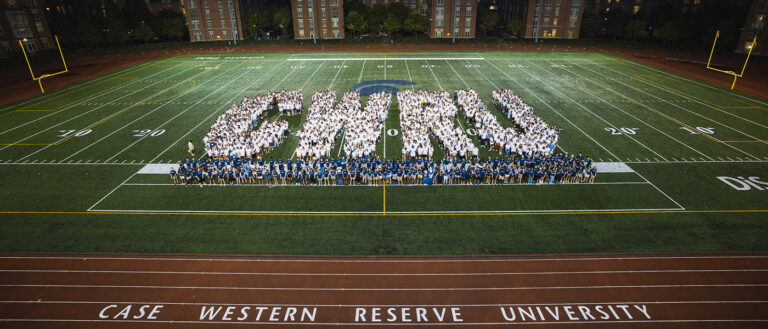More than 1,550 first-year students and 65 transfer students officially became Case Western Reserve University Spartans last week. Beginning with move-in day Sunday, Aug. 21, and continuing through residence hall meetings last night, these new members of our community have spent a full week adjusting to their new home. Today, they will attend their first classes and officially begin their academic journeys.
Robert R. McCullough, assistant vice president for enrollment and dean of undergraduate admission, called this new group of students “a truly remarkable collection of scholars,” in his welcome address to them last week.
“Over the course of the last several months, my colleagues and I have enjoyed getting to know this class, and we are both humbled by their achievements and enthusiastic about all they will take part in as members of the Case Western Reserve family,” he said.
Take a look back at the incoming class’s adventures during Discover Week.
Now it’s our faculty, staff and students’ chance to get to know the Class of 2026 and new transfer students in classes, on-campus jobs, student organizations, performances and more.
To help give you a sense of who they are and where they come from, we’ve gathered this look at the Class of 2026 by the numbers.
Where they’re from
Representing 1,144 different high schools, our newest students come from the following regions:
- Middle Atlantic: 26%
- New England: 5%
- Midwest: 11%
- South: 7%
- Southwest: 4%
- West: 13%
- Ohio: 15%
- Outside the U.S.: 18%
Speaking 57 different languages, members of the Class of 2026 have citizenship in a total of 70 countries.
Some of these new students come to CWRU with a connection to the university, with 8% having had a relative attend. Meanwhile, 13% are paving a path as the first in their families to attend college.
How they were involved
There are many options to get involved at CWRU, and our newest students are proven to be an active group.
Before coming to CWRU:
- 77% volunteered in their community;
- 69% played a sport;
- 52% were involved in the arts;
- 50% worked a part time job or cared for a family member at home; and
- 22% led classmates as members of student government.


